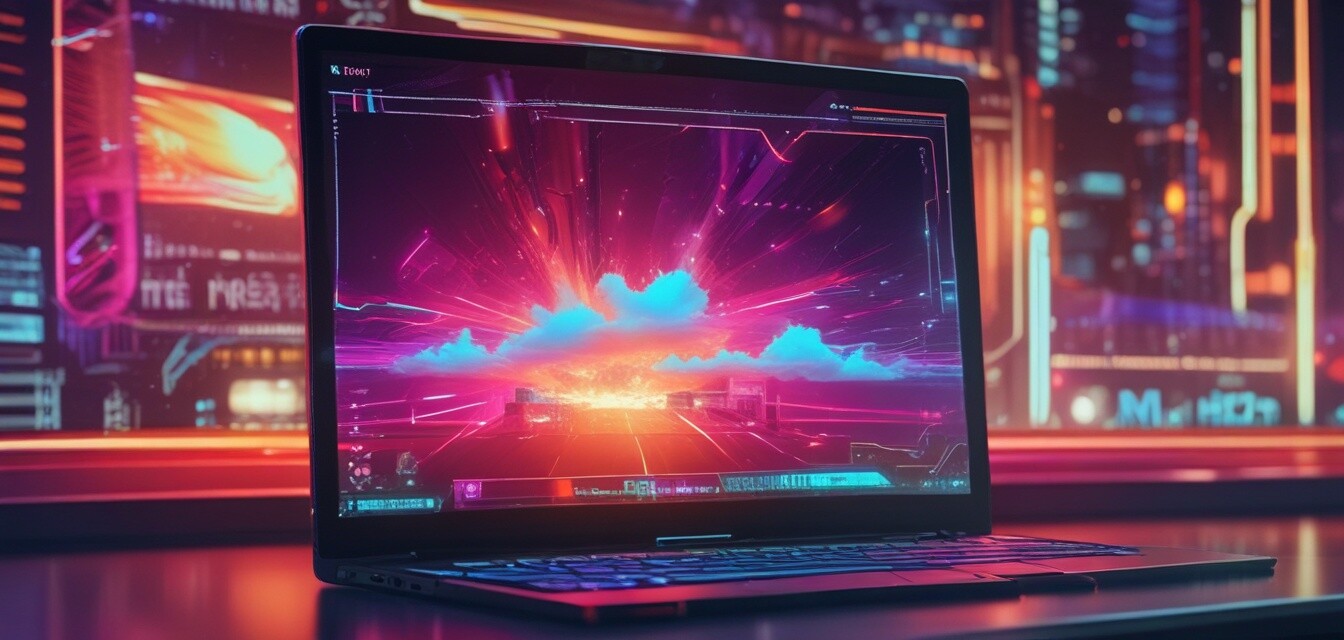
Emerging trends in laptop display technology
Key takeaways
- Refresh rates are becoming increasingly important for gamers and professionals.
- OLED technology is taking over with better color accuracy and contrast.
- Higher resolutions enhance the viewing experience for content creators.
- Touch and foldable screen technology are pushing the boundaries of traditional laptops.
- Manufacturers are focusing on energy-efficient displays for better battery life.
The world of laptop display technology is evolving rapidly. As users demand better visuals and performance, manufacturers are innovating to keep pace with these needs. From refresh rates that appeal to gamers to resolutions suited for content creators, the display technology landscape is diversifying and improving. In this article, we will explore the latest advancements, providing insight into how these technological shifts might influence your next laptop purchase.
Understanding refresh rates
Refresh rates refer to how often the image on your screen is updated each second, measured in Hertz (Hz). Higher refresh rates lead to smoother visuals, especially in fast-paced scenarios.
| Refresh Rate | Ideal For | Typical Applications |
|---|---|---|
| 60 Hz | General use | Web browsing, streaming |
| 120 Hz | Casual gaming | Light gaming, everyday tasks |
| 144 Hz | Serious gaming and professional use | High-paced gaming, graphic design |
| 240 Hz | Competitive gaming | Professional esports, high-end gaming |
Exploring resolutions
Resolution determines the number of pixels on your display, affecting image clarity and detail. Here are some key resolutions:
- HD (720p): 1280 x 720 pixels - basic clarity for general use.
- Full HD (1080p): 1920 x 1080 pixels - standard for most laptops.
- Quad HD (1440p): 2560 x 1440 pixels - offers improved clarity for graphics work.
- 4K (2160p): 3840 x 2160 pixels - ideal for video editing and high-resolution content.
Advancements in screen technology
Numerous display technologies have emerged to enhance the visual experience:
Pros
- OLED displays provide vibrant colors and deep blacks.
- IPS panels offer wide viewing angles.
- High refresh rates enhance motion clarity, especially for gaming.
Cons
- OLEDs can suffer from burn-in if static images are displayed too long.
- Higher resolutions demand more power, affecting battery life.
- Some technologies may increase costs significantly.
OLED technology
Organic Light-Emitting Diode (OLED) technology is gaining significant traction in laptops. OLED panels produce their light per pixel, providing remarkable contrast ratios and richer colors compared to traditional LED displays.
IPS and other LCD technologies
In-Plane Switching (IPS) displays are known for their superior color reproduction and viewing angles. As manufacturers emphasize screen technologies, IPS remains a popular choice for users demanding high-quality displays.
Innovative features on the horizon
Two emerging display technologies are set to redefine the laptop experience:
- Touchscreen displays: More laptops are incorporating touchscreen functionality, providing users with intuitive navigation.
- Foldable screens: Innovations in flexible screen technology are expected to lead to foldable laptops, enhancing portability without sacrificing screen size.
| Technology | Strengths | Weaknesses |
|---|---|---|
| OLED | Excellent contrast and color performance | Potential burn-in issues |
| IPS | Stable colors from various angles | Slower response times compared to TN panels |
| TN Panels | Fast response times | Poor color reproduction and viewing angles |
Impact on battery and performance
As display technology improves, so does its efficiency. Many new screens are designed to be power-efficient, extending battery life on portable devices. While high resolutions and refresh rates can generally consume more energy, recent advancements focus on balancing performance with longevity.
Conclusion
Staying informed about the latest trends in laptop display technology can significantly influence your purchasing decisions. Whether you're a gamer who thrives on high refresh rates, a professional needing intricate colors and clarity for design work, or someone who values energy efficiency, understanding these trends is key to choosing the right laptop for your needs. For more insights into the evolving landscape of laptops, check out our News and Trends page. Keep an eye on these advancements as they pave the way for even more exciting technologies in the near future.